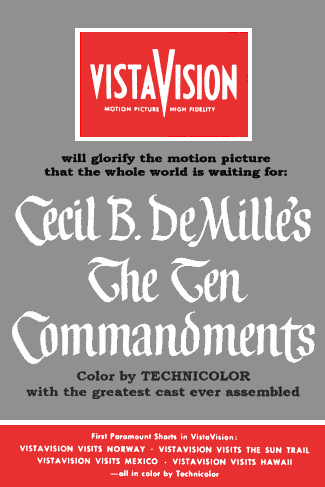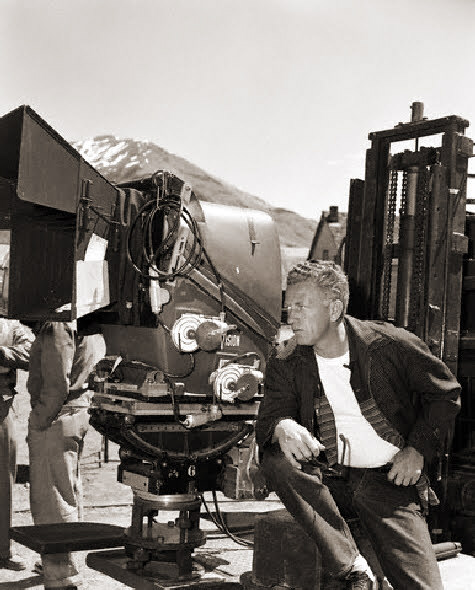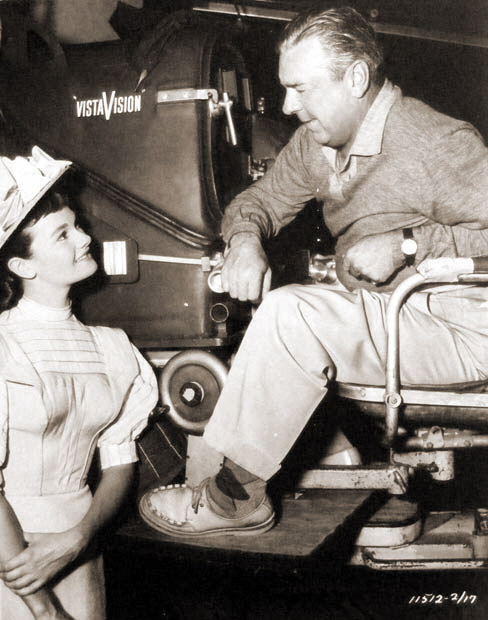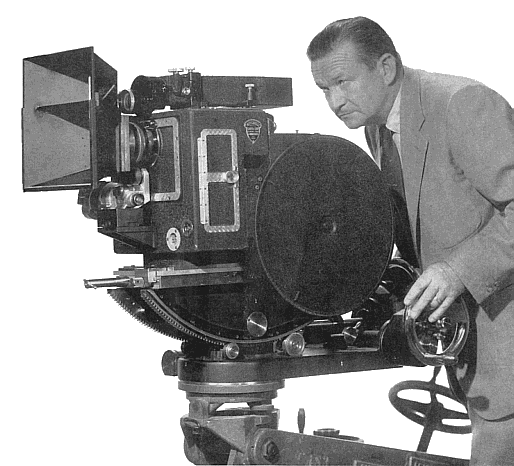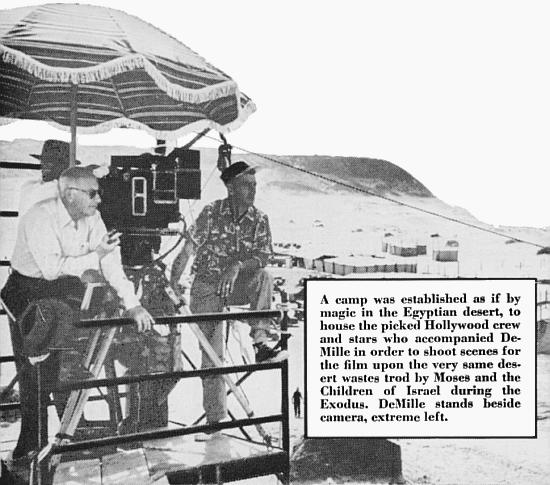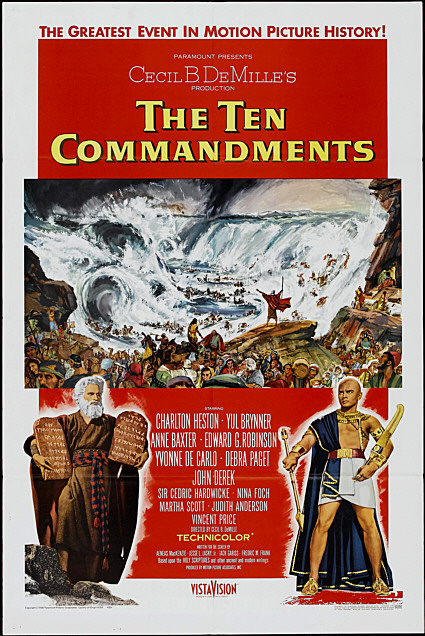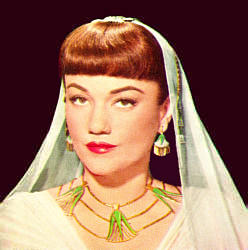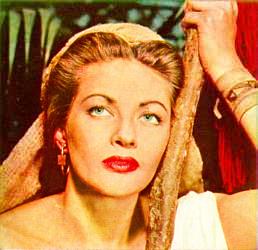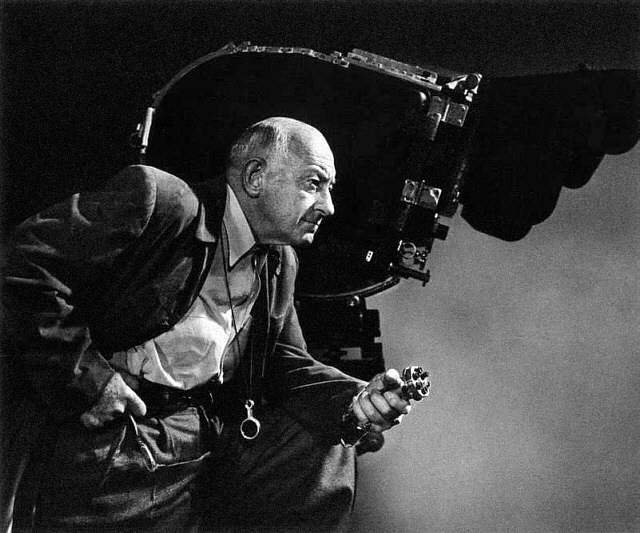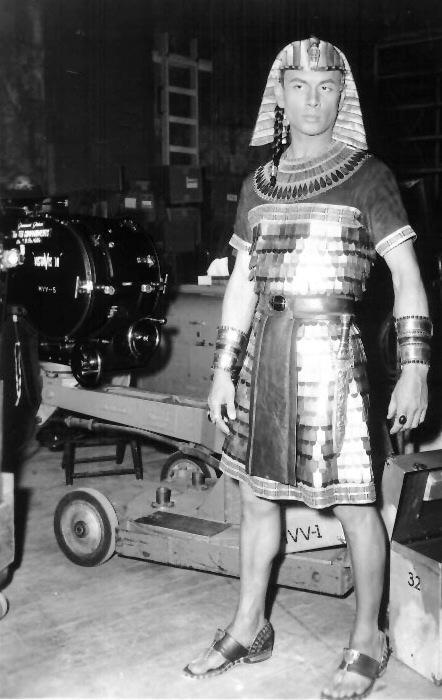|
|
|
|
|
|
|
|
|
|
|
|
Let's Kill The Fallacy You can read all over the Internet, in magazines, and even on the backs of DVD cases that VistaVision's aspect ratio was 1.66:1. Well, it ain't so. |

Many upgraded photos have been added to this section.
| Read the complete text of the VistaVision article written by your Curator for WideGauge Film and Video Monthly |
Paramount Pictures was the only major studio in the U.S. that didn't immediately embrace CinemaScope for use on its major productions. The studio preferred to stick with an aspect ratio of 1.66:1 but sought ways to improve overall picture clarity and definition on ever increasing screen sizes. John R. Bishop, head of Paramount's camera and film processing departments acquired a William Fox "Natural Color" camera built in the late 1920's by the William P. Stein company. This camera exposed two frames of film at the same time through color filters. Bishop cut out the separation between the two frames, rolled the camera over on its side and fitted it with Leica 35mm still camera lenses. This camera, dubbed the "Lazy-8" because it pulled the film across horizontally in 8 perforation frames, provided a total negative area 2.66 times greater than the conventional 35mm camera with a 1.66:1 aspect ratio.
Paramount technicians, working with Eastman Kodak, determined that the large format negative, when printed down to standard 35mm provided a vastly improved image on screens up to 50 feet wide. A second "Natural Color" camera was obtained and converted. Armed with two Lazy-8 cameras, Paramount went to work filming White Christmas in late 1953, while ordering radically new cameras from the Mitchell Camera Company.
While Paramount waited for improved VistaVision cameras, the Lazy 8, in its distinctive red rubber sound blimp, was used to film not only White Christmas, but also We're No Angels, Run For Cover and a number of travelogue short subjects that showed off VistaVision's high quality image.
Seen above right is a Paramount trade paper ad promoting VistaVision. Though over a year would pass from the introduction of VistaVision until the release of The Ten Commandments it was that film that had been earmarked as the showcase for the high resolution process. Note that, like other processes of the time, featurettes showing off the new technology abounded. Paramount had been an early advocate of Technicolor. This close relationship lasted for decades. While a few VistaVision films were done in black & white, the process specifications virtually demanded processing and printing by Technicolor. Much of VistaVision's image quality must be credited to the Technicolor imbibition (dye transfer) printing process.
Seen at left is one of the two Stein "Fox Color" cameras that Paramount engineers adapted for the horizontal 8-perforation film format.
Below are more "Lazy 8" production stills.
At left is actor James Cagney and camera operator Haskell Boggs inspecting the Lazy 8 camera during the filming of Run For Cover in 1955. Boggs was shortly to become a director of photography with a long distinguished list of films to his credit.
Below left is Run For Cover director Nicholas Ray seated behind the same camera during production. Below right is actress Gloria Talbot and director of photography Loyal Griggs, A.S.C. schmoozing by the Lazy 8 during the production of We're No Angels, which starred Humphrey Bogart, Peter Ustinov, and Aldo Ray.
A Personal Message from Adolph Zukor
It has always been our policy that pictures should be capable of being played in any theater in the world. Therefore, we recommend standard sprocket-hole film and standard position, single, optical sound track. To improve the exhibition of pictures, we do feel that screens should be as high and as wide as the theater can install.
A year ago last May we released SHANE as the first of the widescreen pictures from Paramount and have since perfected the VistaVision process to still further improve the definition and quality of picture. The first of the VistaVision pictures to go into release will be WHITE CHRISTMAS, to be released in October. Perspecta sound has been added to VistaVision prints and may be used, if desired, by any theater which has the proper equipment.
With regard to the shape of pictures on the screen, we are convinced that the most artistic shape is in a ratio of approximately 1.85:1, and we also find that this shape best fits the great majority of theatres. In the future we are confident that the best in the presentation of motion pictures will be obtained with VistaVision prints shown on a high, wide, seamless screen of this shape, and using excellent projection equipment.
ADOLPH ZUKOR
Chairman of the Board,
Paramount Pictures Corp.Published in the September, 1954 issue of International Projectionist, which featured many items relating to the first anniversary of the introduction of competitor 20th Century-Fox's CinemaScope system.
(courtesy of David Johnson)
John R. Bishop posing with the newly developed Mitchell Elephant Ear VistaVision camera. In setting goals for the development of the new camera, Paramount had requested that the camera would be silent, if possible. The Elephant Ear turned out to be one of the quietest cameras Mitchell produced up to that time. Still, for dialog recording, the camera would require a massive blimp.
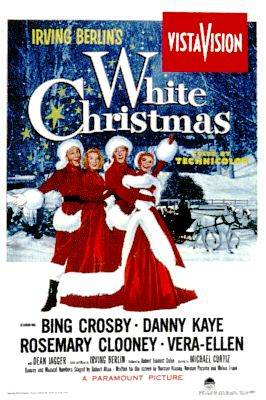 | Left: First film out of the chutes for VistaVision, White Christmas wasn't the blockbuster that Fox's The Robe was, and VistaVision didn't inspire other studios to use the process the way CinemaScope did. But the song sold about a zillion copies and is still a record holder, no pun intended. | 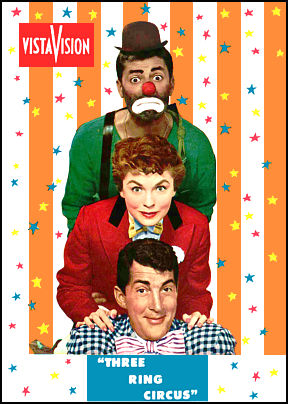 |
|
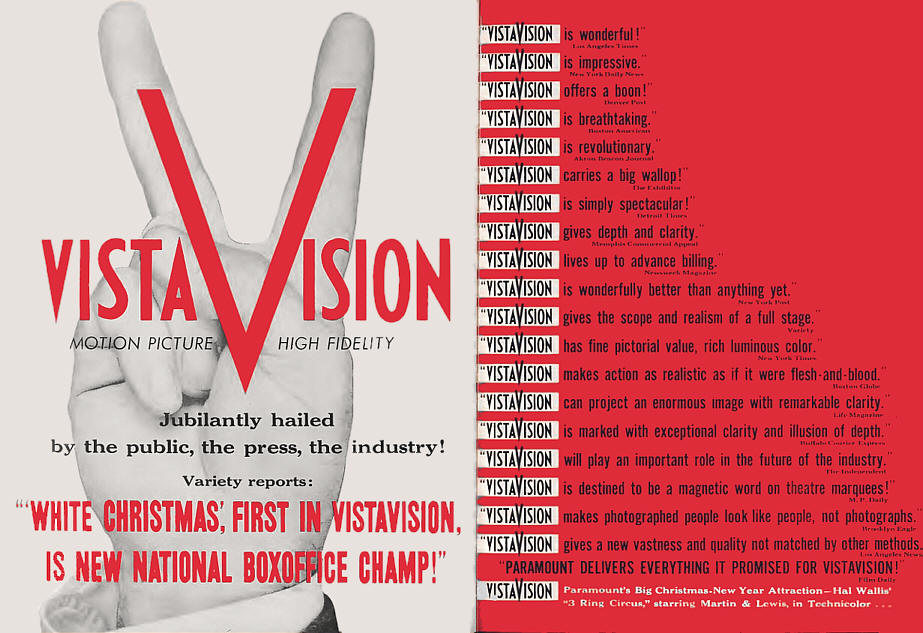
Apparently Winston Churchill thought highly of VistaVision
Trade Ad courtesy of Stephen Paley
The Paramount publicity department was as boastful, and full of baloney, about the making of The Ten Commandments as they were about VistaVision. The only stars that made the trek to Egypt were Charlton Heston, and Yul Brynner (very briefly). Other than a couple of miles of footage of Heston stumbling around in the wilderness and segments shot on the California beach for the Exodus segment, the film was shot entirely on the Paramount sound stages and it's painfully obvious.
Decisions, decisions, decisions! Deciding between a bunch of gods that look like mutated animals and one that you can't see had to have been a lot easier for Moses than deciding between the ruby lipped Egyptian princess and the ruby lipped shepherd girl. This has nothing to do with film technology but the Curator feels you'll be a more rounded person if you consider aspects other than sprocket holes and such.
Okay, everybody say, "cheese"!
Cecil B. DeMille, ever the showman, poses heroically with the VistaVision camera. If the pose looks familiar it may be reminding you of Henry Wilcoxon, who stood that way in dozens of deMille films. Hell, Everybody stood that way in a DeMille film.
At right, Yul Brynner seems to be able to strut while standing still. Here we find him testing a new costume. Brynner won his Oscar for The King and I but he was a natural in the role of Rameses II in The Ten Commandments.
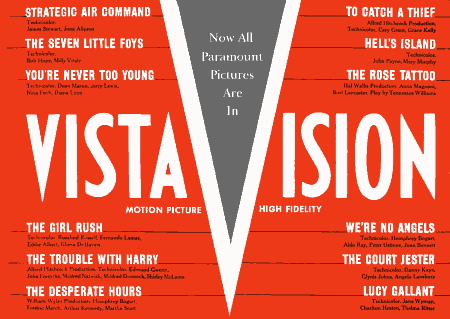
While Cecil B. DeMille was working on The Ten Commandments, Paramount put all their resources into VistaVision. This is a two page trade journal ad listing some of the first VistaVision features planned. The studio also released Technicolor short subjects showing scenes from all the VistaVision films that were in production. It's somewhat interesting to note that production on The Ten Commandments took so long that Charlton Heston made two VistaVision films for Paramount during the time he was also playing Moses.
illustration courtesy of Stephen Paley
What's This?
You are on Page 1 of






E-mail the author
CLICK HERE©1996 - 2004 The American WideScreen Museum
http://www.widescreenmuseum.com
Martin Hart, Curator
